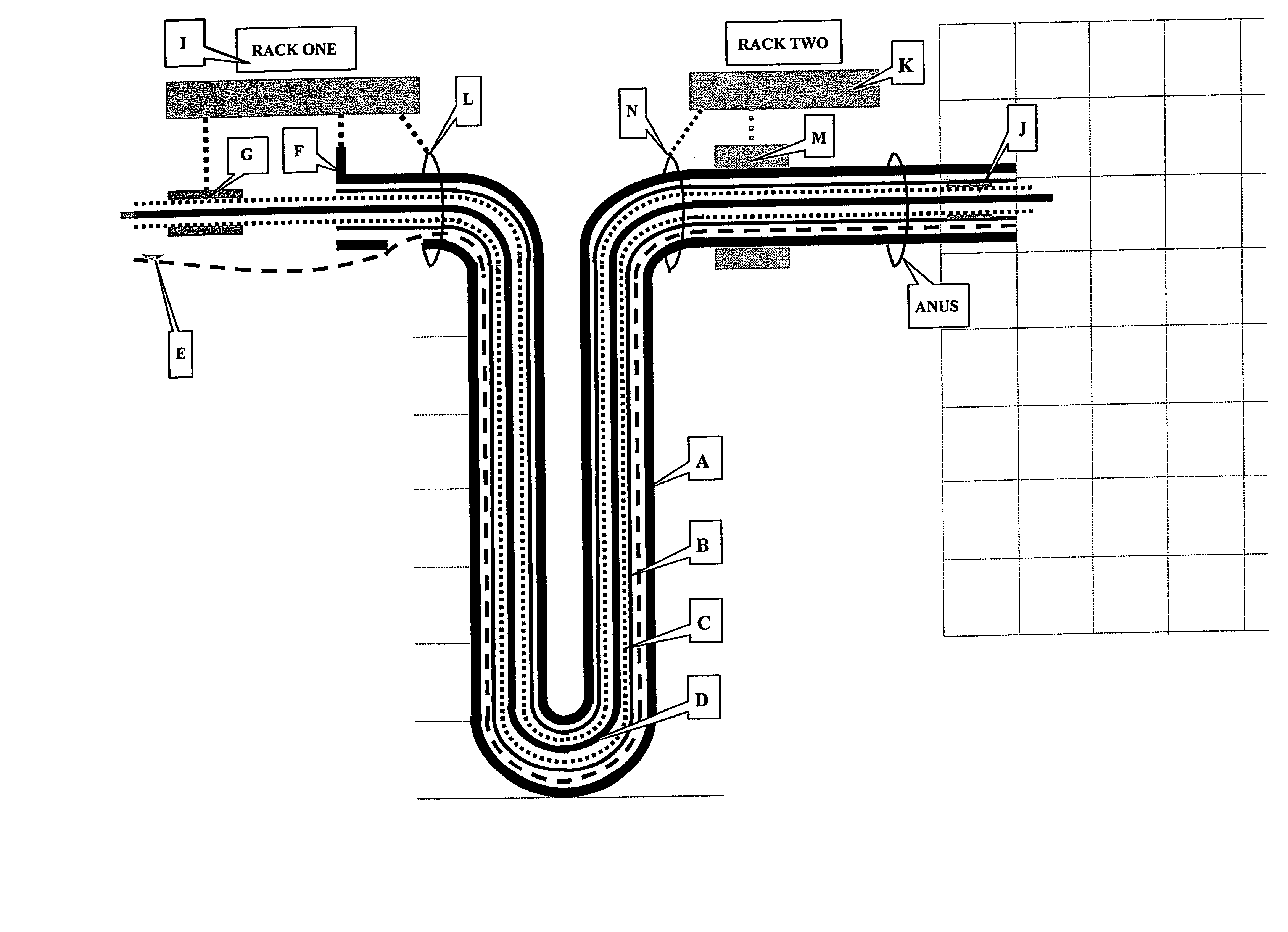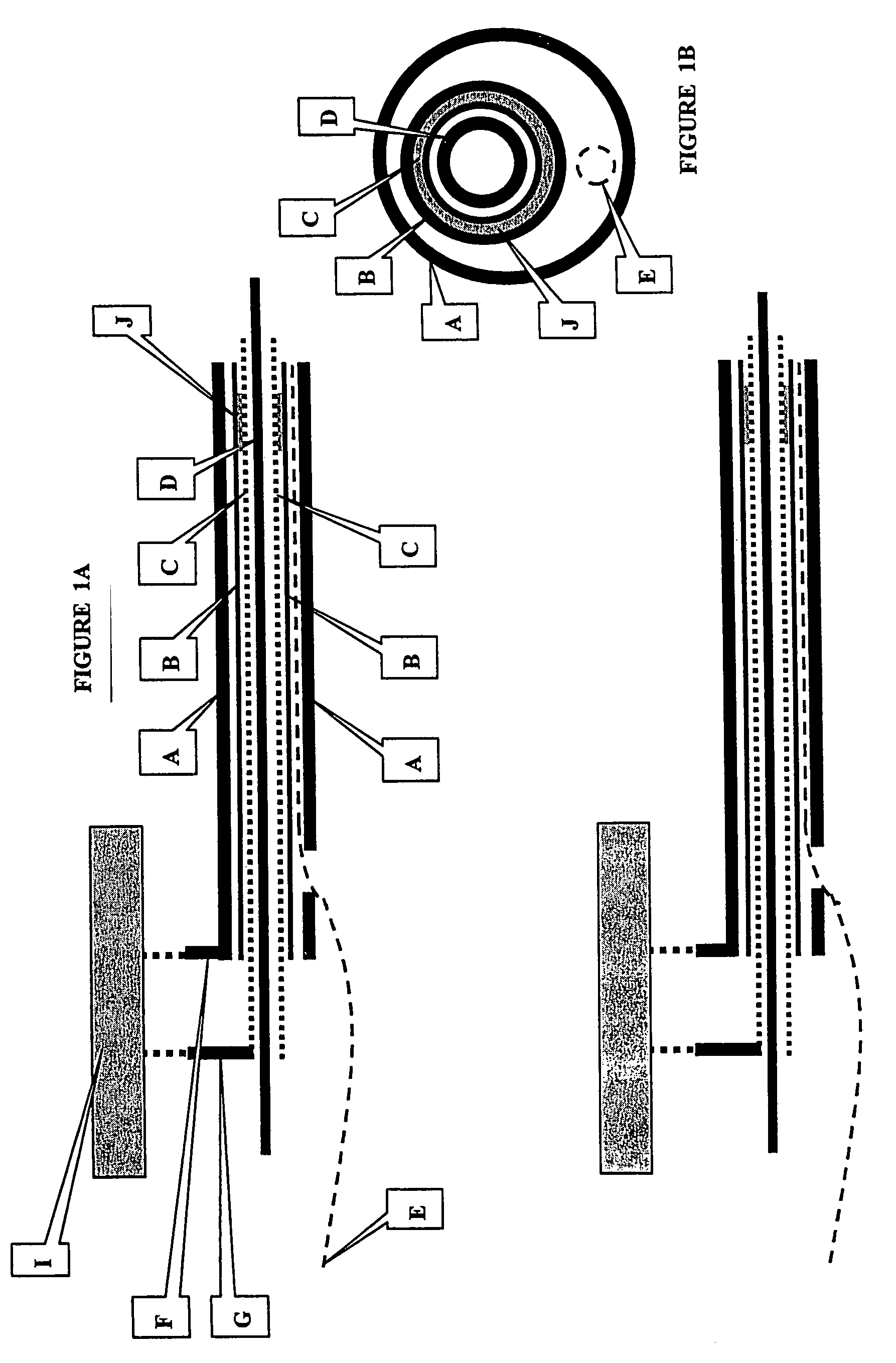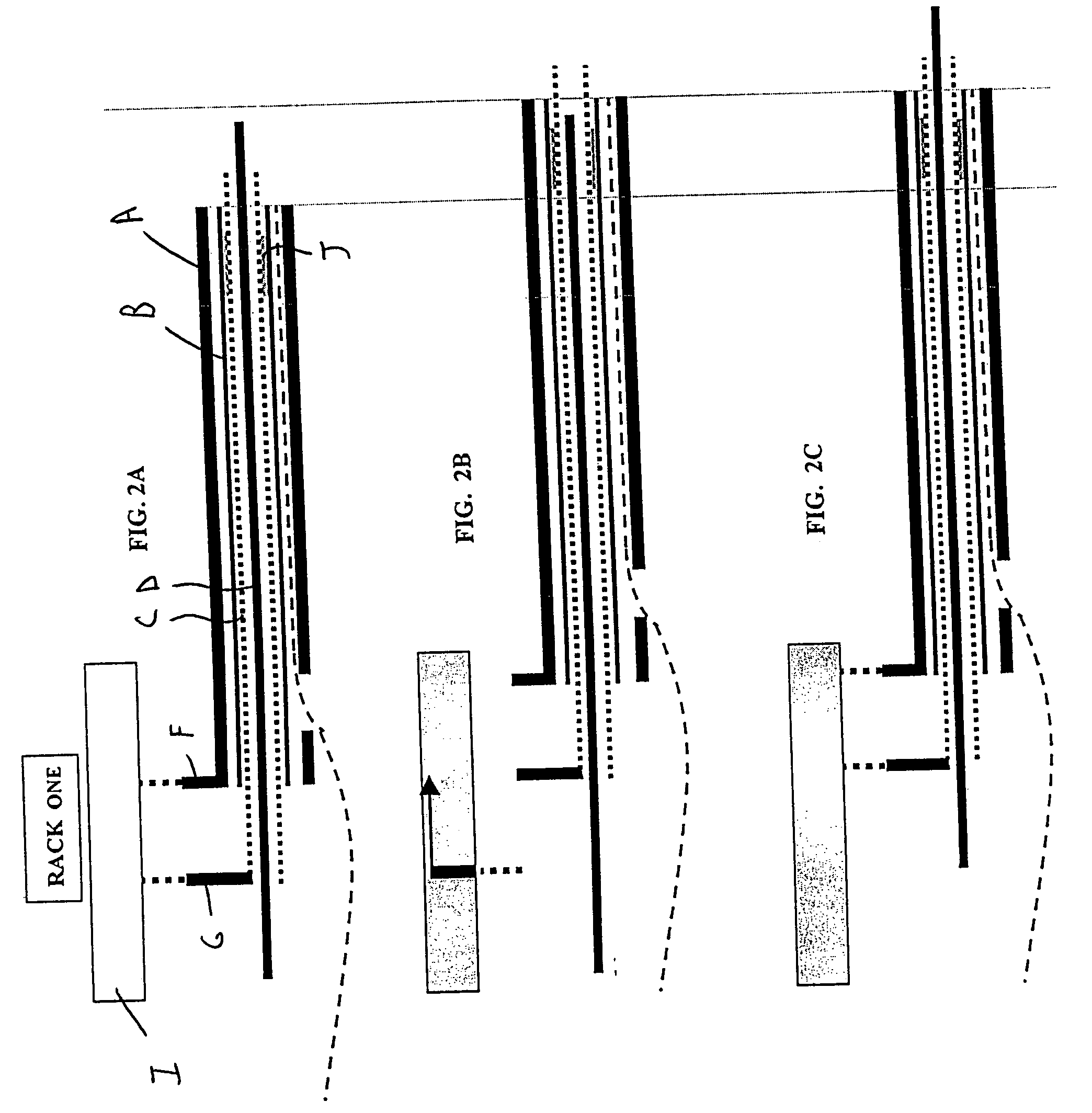Automated self-propelling endoscope
a self-propelling endoscope and automatic technology, applied in the field of self-propelling endoscopes, can solve the problems of long time that is required to examine the full length of the colon, the walls of the colon often fail to direct and guide the scope, and the obstruction of colonoscopy
- Summary
- Abstract
- Description
- Claims
- Application Information
AI Technical Summary
Benefits of technology
Problems solved by technology
Method used
Image
Examples
Embodiment Construction
[0033]In an exemplary embodiment of a self-propelling endoscope system of the present invention includes modification of existing flexible obturators, and use of external automated controlling mechanisms, but requires no modification of the endoscope itself. Other embodiments involve slight modification to the endoscope as described below.
[0034]FIGS. 1A and 1B illustrate schematic sagittal (i.e., longitudinal cross-section) and cross-sectional views of the endoscope. The sagittal section depicts a flexible colonoscope laid out in a linear fashion. Its essential components are labeled and shown in FIG. 1A. FIG. 1B is a schematic cross-sectional view. Letters “A” through “J” are labels to identify the following components:
[0035]A). Outer wall of colonoscope.
[0036]B). Wall of “obturator channel” forming the lumen (diameter preferably in the range of about 3.8–5 mm) through which wire obturators are passed. The obturator channel wall is integrally attached to the outer wall of the colon...
PUM
 Login to View More
Login to View More Abstract
Description
Claims
Application Information
 Login to View More
Login to View More - R&D
- Intellectual Property
- Life Sciences
- Materials
- Tech Scout
- Unparalleled Data Quality
- Higher Quality Content
- 60% Fewer Hallucinations
Browse by: Latest US Patents, China's latest patents, Technical Efficacy Thesaurus, Application Domain, Technology Topic, Popular Technical Reports.
© 2025 PatSnap. All rights reserved.Legal|Privacy policy|Modern Slavery Act Transparency Statement|Sitemap|About US| Contact US: help@patsnap.com



